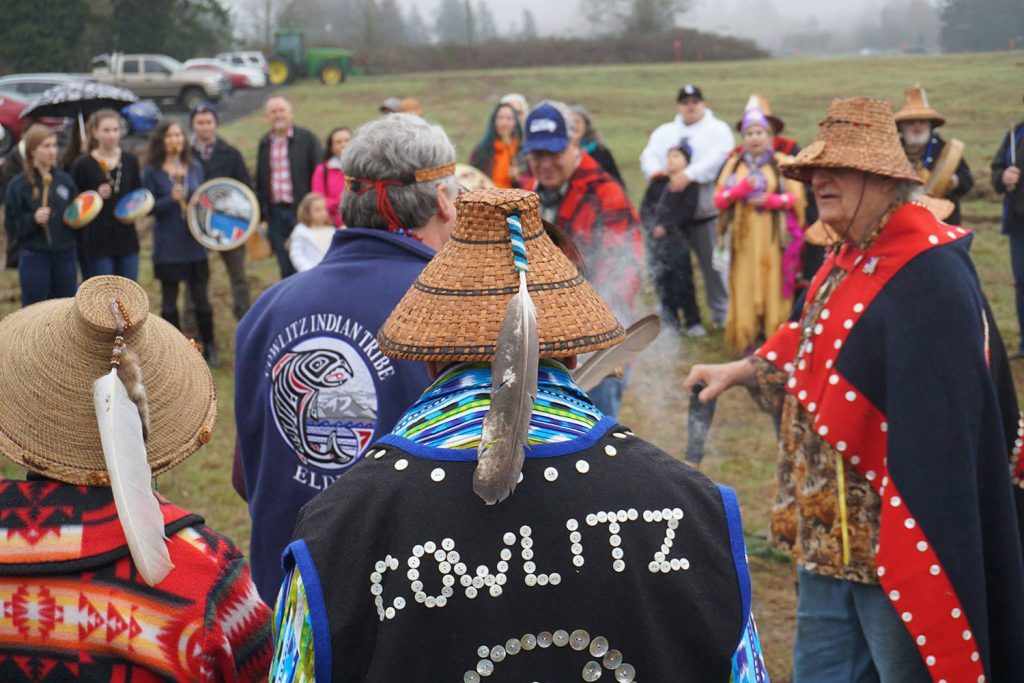Take the Pledge
Recover our Wellbeing (ROW) encourages everyone to Take the Pledge against fentanyl and to join together in supporting a strong community that is drug free.
Our goal is to create awareness about the impact of fentanyl, to offer resources that support and educate our people, and use the strength of our community to saves lives.
If you or someone you know is actively using illegal or illicit drugs, remind them about ROW and ask them to sign the Free From Fentanyl Pledge. Let’s pledge to end this outbreak together.
Free From Fentanyl Pledge
What is Fentanyl?
Fentanyl is a powerful synthetic opioid painkiller used for treating severe pain. Unless administered by a medical professional or prescribed and used under the supervision of a doctor, it can be deadly.
Outside of the medical field, fentanyl is illegally made and used in street drugs and fake prescription pills. It is combined with other drugs in random concentrations to make them cheaper, more powerful, more addictive, and more dangerous. These factors put users at risk of an overdose.
Did You Know?

Fentanyl is
stronger than heroin.
Source: dea.gov
Fentanyl is
more potent than morphine.
Source: dea.gov
Fentanyl is
on the list of biggest killers of 18-24 year-olds in the U.S.
Source: cdc.gov
of fentanyl is all it takes to overdose - that's the size of a few grains of salt.
Source: dea.gov
of pills laced with fentanyl in 2024 contained a potentially lethal dose.
Source: dea.gov
of 2023 opioid overdose deaths in Washington state involved fentanyl.
Source: doh.wa.gov
Americans died every day on average from overdoses relating to synthetic opioids like fentanyl in 2022.
Source: cdc.gov
of overdose deaths nationwide happened with a bystander present in 2023.
Source: cdc.gov
of overdose deaths nationwide in 2023 had at least one possible opportunity for intervention.
Source: cdc.gov

Protect Your Wellbeing
Stay Safe
Fentanyl is a tasteless, odorless drug, and it can be impossible to tell it apart from other street drugs or medication. Here are some precautions you can take to protect yourself:
Be Careful Where You Buy Medicine
Fake prescription pills have been marketed and sold as if they were legitimate medication on social media sites and illegal online pharmacies. However, many of these fake pills contain expired medication or are filled with fentanyl or meth. These pills may also be laced with other synthetic opioids and veterinary tranquilizers (such as xylazine, medetomidine, and carfentanil).
Unless the medicine is prescribed by your doctor and you get it from a licensed pharmacy, assume any pill is not safe.
Test for Fentanyl
Fentanyl test strips are a tool that can reduce the risk of a fentanyl overdose. They typically give results within 2-5 minutes, which can be the difference between life or death.
Quit/Don't Start
While there are ways to reduce the risk of an overdose, avoiding drug use altogether is the best way to protect yourself. If you are currently using fentanyl or other drugs or medications not prescribed by your doctor, seek help and treatment options to help you recover. If you have never used fentanyl or other drugs, don’t start.
Fentanyl is commonly found in street drugs like heroin, cocaine, meth, and ecstacy/MDMA (also known as molly) as well as in fake prescription pills that resemble pain relievers (Vicodin®, Percocet®), depressants (Valium®, Xanax®), and stimulants (Adderall®).
Did You Know?
380+ million
lethal doses of fentanyl was seized by the DEA in 2024 – enough to kill every American.
Did You Know?
380+ million
Know the Signs
Fentanyl acts quickly. Knowing how fentanyl affects the body can help you recognize it in an emergency situation and act accordingly.
Side Effects
Fentanyl can start taking effect as soon as a minute after taking it, and maximum effect can occur within several minutes. Like other opioids, it can cause side effects such as:
- Euphoria, or pleasurable sense of well being and bliss
- Pain relief
- Relaxation
- Drowsiness
- Falling asleep or losing consciousness
- Dizziness
- Confusion
- Slowed breathing
- Nausea
- Constipation
Withdrawal Symptoms
Fentanyl can cause severe withdrawal symptoms that can start as early as a few hours after use. Withdrawal symptoms for fentanyl include:
- Muscle and bone pain
- Sleep problems
- Diarrhea and vomiting
- Cold flashes with goose bumps
- Uncontrollable leg movements
- Severe cravings
Signs of an Overdose
Symptoms of an overdose include:
- Confusion
- Falling asleep or losing consciousness
- Difficult to wake up
- Pinpoint pupils
- Clammy skin
- Blue or pale lips or fingernails
- Choking or gurgling sounds
Save A Life
If you think someone is overdosing:
Call 911 Immediately
Don’t be afraid to call 911 if you witness an overdose. Under Washington’s Good Samaritan Law, if you in good faith help someone who is overdosing, you have general protection from legal action.
Tell the dispatcher that “Someone is unresponsive and not breathing.” Give a specific address or a specific description of your location. Answer any questions the dispatcher asks you so they can get the right help to you quickly. Follow any instructions the dispatcher gives you. If appropriate, the dispatcher will instruct you on what to do, including how to give rescue breathing (CPR). Do not hang up until instructed to do so.
Administer Naloxone Immediately
This medication can reverse the effects of an opioid overdose for 60-90 minutes, which can give emergency services more time to get to someone who has overdosed.
If available, give one dose of naloxone by nasal spray or injection. If the person doesn’t respond 2-3 minutes after the initial dose, give a second dose. If symptoms continue, or if they return after disappearing, and enough naloxone is available, continue giving doses every 2-3 minutes until breathing resumes or until emergency services arrive. Do not inject the person with any other substance.
Keep Them Awake And Breathing
Try to wake the person by calling their name, lightly pinching the person, or by rubbing your knuckles on the center or the ribcage. Do not slap, shake, or forcefully try to wake the person.
If the person responds to stimulation, determine if the person can stay awake and breathe on their own. Monitor the person and try to keep them awake and breathing. If the person is unresponsive and stops breathing, provide rescue breathing and chest compressions. Continue until they start breathing on their own or until emergency assistance arrives.
Lay the Person on Their Side
If the person is breathing normally on their own, roll the person on their side to prevent choking. Adjust the top leg so the leg forms a ninety-degree angle. Adjust the bottom arm to form a ninety-degree angle and bend the top arm so the hand rests under the person’s head. Tilt the head back gently to open the airway. This position is known as the recovery position, and it helps keep the person’s airways open, especially in case of vomiting.
If the person stops breathing, return the person to their back, and start rescue breathing and chest compressions. Continue until the person starts breathing again or until emergency workers arrive.
Stay with Them Until Emergency Workers Arrive
While waiting for emergency assistance, monitor the person to make sure they continue breathing normally. Keep the person warm with blankets or dry clothing, if available.
If the person is breathing normally on their own, roll the person on their side to prevent choking. Adjust the top leg so the leg forms a ninety-degree angle. Adjust the bottom arm to form a ninety-degree angle and bend the top arm so the hand rests under the person’s head. Tilt the head back gently to open the airway. This position is known as the recovery position, and it helps keep the person’s airways open, especially in case of vomiting.
If the person stops breathing, return the person to their back, and start rescue breathing and chest compressions. Continue until the person starts breathing again or until emergency workers arrive.
Stay with Them Until Emergency Workers Arrive
While waiting for emergency assistance, monitor the person to make sure they continue breathing normally. Keep the person warm with blankets or dry clothing, if available.
More Deaths
of Americans under 50 are linked to fentanyl than any other cause of death.
More deaths
Fentanyl & Xylazine
Xylazine is a non-opioid animal tranquilizer that is not approved for human use. It is currently the most common substance has been found mixed with fentanyl and other drugs to make drugs cheaper, more powerful, more long-lasting, and more addictive. In addition to its sedative abilities, it can also cause symptoms like skin infections and wounds. This occurs regardless of how it is used. Combined with fentanyl or other synthetic opioids, xylazine can increase the likelihood of a fatal overdose.
Like fentanyl, it doesn’t take much xylazine to overdose. Unlike fentanyl, the symptoms of a xylazine overdose can’t be reversed by naloxone. If an overdosing individual doesn’t respond to naloxone, xylazine may be involved.
Frequently Asked Questions
What are the side effects of xylazine?
Xylazine takes effect quickly once it is taken. In people, xylazine can cause side effects such as:
- Blurry vision
- Loss of coordination
- Small, constricted pupils
- Dry mouth
- High blood sugar
- Low body temperature
- Slow or shallow breathing
- Dangerously low blood pressure
- Slowed heart rate
- Weakened muscles and reflexes
- Drowsiness or difficulty staying awake
- Painful skin wounds that can become infected, including:
- Skin infections
- Wounds below the skin (abscesses)
- Open, weeping wounds (skin ulcers)
- Necrosis (soft tissue death), which can lead to amputation
- Quick and intense physical dependence
- Severe withdrawal symptoms
- Coma
- Death
Where can I get naloxone?
Naloxone is available for purchase over the counter through many pharmacies, and all pharmacies in Washington can provide it to individuals without a prescription.
Naloxone is also available through Washington’s mail order program. You can order for mail online or see other options at stopoverdose.org.
Where can I find fentanyl test strips?
Fentanyl test strips are available for sale. Some options include DanceSafe.org and Dosetest.com.
Where can I find local treatment and recovery options?
The Cowlitz Indian Tribe offers a Medication Assisted Treatment (MAT) Program for Tribal members and other populations. It is a Native-focused program that offers patients cultural treatment options as well as medication options that support recovery. The walk-in clinic in Tukwila is open Monday-Friday from 9 AM – 4 PM.
The Cowlitz Indian Tribe also offers a Substance Use Disorder Program that offers multiple services, including outpatient treatment, aftercare, and the Healing of the Canoe Youth Prevention Program.
Where can I find other treatment and recovery options?
To find treatment options in Washington state, visit the Washington Recovery Help Line website.
The most comprehensive collection of recovery resources is through FindTreatment.gov.


What is ROW?
Recover Our Wellness (ROW) is a collaboration to raise awareness about drugs laced with fentanyl. People are dying from overdoses at alarming rates, and many overdose deaths happen because fentanyl is unknowingly mixed into the illegal drugs and fake prescription pills that they are using.
If you or someone you know is actively using illegal or illicit drugs, remind them about ROW and ask them to sign the Free From Fentanyl Pledge.